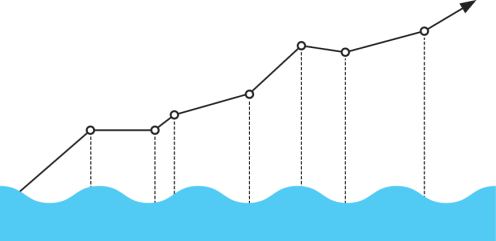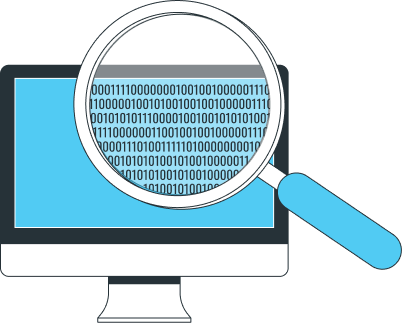Data analytics has always been a fast-paced field, but with recent developments in AI and machine learning, the entire industry is set for even more disruption and innovation in 2024. Companies are rethinking their entire data analytics strategies, and data scientists are looking for ever more powerful ways to extract more insights from their massive pools of data. We’ve put together a list of some of the top data analytics trends that will continue to dominate the world of data analytics in 2024. Read on for a glimpse into the future of this field.
What Is Data Analytics?
So, what is data analytics? Simply put, it’s the process of collecting, processing, and analysing large amounts of data to identify patterns, trends, and insights that can inform decision-making. With the rise of big data, organisations have more access to information than ever before, creating a need for specialised tools and techniques to make sense of it all. Data analytics allows businesses to turn raw data into actionable insights that can help drive growth and efficiency. Some businesses are also turning to the best data marketing agency they can find to leverage data analytics and get more from their marketing efforts.
What Is The Future of Data Analytics?
There’s a growing number of ways to extract invaluable insights from data. These advancements are just the beginning, and the future of data analytics looks even more promising. What can we expect in 2024 and beyond? Let’s look at some of the top data analytics trends that are set to shape the world this year.
1. The Rise of AI-Driven Analytics
Artificial Intelligence (AI) has been a game-changer in data analytics. The integration of AI algorithms, natural language processing and augmented analytics technologies has enabled the analysis of vast datasets with unprecedented accuracy and speed. In 2024, we’re witnessing a surge in AI-driven analytics, enabling predictive modelling and data interpretation at a scale never seen before. This will allow businesses to make smarter and faster decisions based on data while improving overall efficiency.
2. Edge Analytics Gaining Momentum
With the explosion of IoT devices, edge computing analytics has become increasingly popular. Edge analytics is the process of analysing data at the edge of a network rather than sending it to a central location for processing. This allows for real-time analysis and decision-making, particularly in time-sensitive industries like healthcare and manufacturing. We can expect edge analytics to continue gaining momentum as more businesses look for ways to optimise their processes and improve response times.
3. Enhanced Data Privacy and Security
As data becomes increasingly integral to operations, concerns around data privacy and security are at an all-time high. New regulations and increasing awareness are driving the adoption of enhanced security measures. Encryption, anonymisation, and secure access controls are becoming standard practices in data analytics. If businesses want to stay compliant and not risk their reputation, they must prioritise data privacy and security in their analytics practices.
4. The Emergence of Low-Code/No-Code Platforms
In the past, data analytics required specialised skills and knowledge, making it inaccessible to many businesses. However, with the emergence of low-code/no-code platforms, this is changing rapidly. These platforms allow non-technical users to build and deploy their own data analytics solutions without the need for coding or extensive training. This democratisation of data analytics is making it more accessible and cost-effective for businesses of all sizes.
5. The Growth of Predictive and Prescriptive Analytics
While descriptive analytics remains fundamental, there’s a growing shift towards predictive and prescriptive analytics. These advanced analytics techniques not only interpret past data but also predict future trends and suggest actions to achieve desired outcomes. It’s no longer enough to just report on what has happened; businesses now want to know what will happen and how they can use that information to make proactive decisions.
These data trends are being fueled by the growing availability of big data, which allows for more accurate predictions and recommendations. We expect to see predictive and prescriptive analytics take centre stage in the coming years.
6. Cloud-Based Analytics as the New Norm
The cloud has become the backbone of data analytics, offering scalability, flexibility, and cost-efficiency. There wouldn’t be a data analytics revolution without the cloud, and it’s no surprise that more businesses are adopting cloud-based solutions.
This trend is set to continue as more organisations recognise the benefits of storing and analysing data in the cloud. With remote work being the new norm, cloud-based analytics offer a seamless way for teams to collaborate and access data from anywhere in the world. However, with this trend comes an even greater need for robust security measures to protect sensitive data from malicious actors.
7. The Importance of Data Ethics and Governance
With the increasing use of data analytics comes the responsibility to ensure that ethical guidelines are followed and data is handled responsibly. We’ve seen numerous high-profile cases where companies have faced backlash for mishandling user data or using it unethically.
As a result, there’s a growing focus on data ethics and governance, with businesses implementing policies and procedures to ensure data is used ethically and responsibly. These data trends will continue as regulators crack down on data privacy violations and consumers become more aware of their rights regarding their personal data.
8. Greater Focus on Data Literacy
With data becoming a critical asset, organisations are focusing on enhancing data literacy among their employees. Understanding data and its implications is becoming as essential as computer literacy was in the past decade. Data literacy involves understanding how to access, manipulate, and analyse data effectively. This trend is also spurring the growth of citizen data scientists – employees with a basic understanding of data analytics who can work alongside professional data teams.
9. Google Analytics and the Role of Dashboarding
As more businesses incorporate Google Analytics into their operations, there’s a growing need for effective dashboarding – visual representations of data that allow for easy monitoring and analysis. With the vast amount of data available, organisations must be able to quickly identify key insights and track their performance metrics.
Dashboarding allows businesses to create a customisable data visualisation that provides real-time updates on important KPIs, which helps them make informed decisions based on data. For more information about Analytics check out our article on how Google Analytics works.
The Future Looks Bright for Data Analytics
It’s an exciting time to be in the data analytics field. With the growing number of powerful tools at our disposal, any company that wants to gain a deep understanding of its target audience, improve operations, and develop more effective marketing strategies can do so backed by the wisdom of data. As technology continues to advance and become more accessible, we can expect data analytics to play an even larger role in our lives and businesses in the future.
Big data is shaking things up across industries, and it shows no signs of slowing down. 2024 won’t disappoint in terms of data analytics developments, and we can expect to see even more exciting data trends and advancements in the field.
FAQs
Here are some of the most frequently asked questions about data trends in 2024.
What is the trend in data analytics?
Trends in data analytics refer to the current developments and innovations shaping the field. For example, the rise of artificial intelligence and machine learning in data analytics is a current trend that’s playing a significant role in how businesses use data to make informed decisions. Other trends include data privacy and security, the use of cloud-based analytics tools, and the growing focus on predictive analytics.
What is the trend in analytics in 2024?
As we move through 2024, some of the key trends in data analytics include the integration of AI and machine learning, the growing use of edge computing, a greater focus on data security and privacy, and a larger emphasis on data literacy among employees. Other emerging trends may also arise as technology continues to advance and businesses find new ways to harness the power of data.
What is the current trend in data science?
The biggest current trend in data science is the integration of AI and machine learning into analytics processes. This includes using these technologies to automate data analysis, identify patterns and trends, and make predictions based on data.












